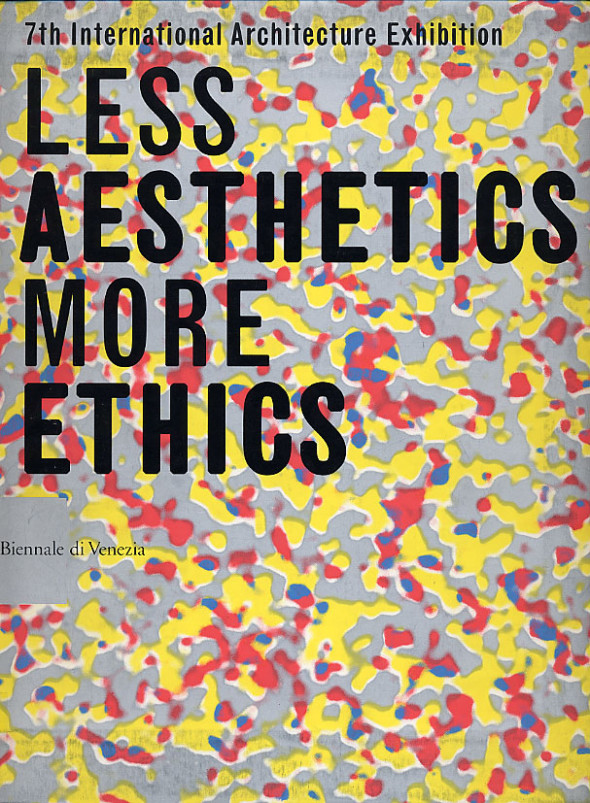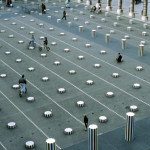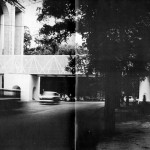Etica
[omissis] | davide tommaso ferrando

A brick has no morals.
The 2000 Venice Architecture Biennale was launched with the challenge “Less Aesthetics, More Ethics”, a provocation from the overall curator, Massimiliano Fuksas, for architects to address issue beyond the aesthetic. It was a well-meant call, but fatally flawed because those four words still wedded aesthetics to ethics; they just asked for a rebalancing of the priorities. They suggest that if you just play down aesthetic excess, then ethics will emerge in the gaps that are left. Fuksas is far from alone in linking aesthetics to ethics; it is a persistent strand in architectural thought, and the one most responsible for the delusions found in the parallel universe where morals are attached to objects. […]
The common message arising out of these voices is simple: that ethics and aesthetics are mutually dependent; good aesthetics, in the form of beauty, leads directly to a good life, in the form of an ethical society, and equally that ethical society is the necessary context for the context of good aesthetics. This closed loop is very consoling for architects, because it places them – as arbiters of aesthetics – as central figures in the ethical process. The iteration of this loop was precisely the response of most architects to Fuksas’s provocation at the Venice Biennale; not less aesthetics but actually more, on the understanding that as long as aesthetics can be equated with ethics, more aesthetics results in more ethics. […]
One can equally easily make a list of quotes that equate rectitude in construction with an ethical stance. […]
In both the aesthetic and the tectonic the ethical association is so far removed from the world of social dynamics, where ethics has to be situated, that it becomes a phony ethics. In both cases there is also a worrying coercion going on: you (the world beyond) can have access to these ethical standards, but only if you join us in our parallel universe. Ethics are thus detached from their essential condition of being worked out through shared negotiation and instead are situated in a very controlled environment that positions the architect as aribter. […]
In materializing ideas as objects, the reification of ethics as aesthetic form results in the abstraction of ethics, and in this the creation of something that is not ethics. Ethics […] is the responsibility for the other; it is, at its core, to do with social relations. For the architect to engage in the ethical field therefore means to engage with how these (social) relations are played out in (social) space. The phony ethics of aesthetics and tectonics freeze that dynamic and place all the attention on the contemplation of the object beautiful and refined, a state of removal for both viewer and viewed that can be reached only away from the flux of everyday space. In this, any connection to ethics as played out through social, spatial, relations is broken.
To put it simply: a brick has no morals. The careful placing of two bricks together, Mies’s definition of the starting point of architecture, is not an ethical act […]. There is no redemption in shadow gaps. People are not elevated to a higher plane of virtue through the appreciation of beauty. Blobs do not possess an “ethics of motion”; they are, at best, just blobs, at worst, part of the commodification of architecture and thus part of an ethically reduced world.
JEREMY TILL, Architecture Depends, The MIT Press, Cambridge 2009, pp. 174-177.
Una risposta a “Etica”
Lascia un commento Annulla risposta
Questo sito usa Akismet per ridurre lo spam. Scopri come i tuoi dati vengono elaborati.








Dear Davide,
Thanks for posting this extract from Till’s book. I encountered it a couple of years ago, and was quite impressed by it. (I even offered to translate it (and some surrounding passages) from the book into German, for Arch+, and had Till’s literary agent give me contractual license. Alas, the translation was not published, because Arch+ functions exclusively around solicited content on in-house themes.)
However, in the past years I’ve worked more on architecture ethics, along with other researchers, and come to the conclusion that while remarks like Till’s helpfully trigger a discussion, they do not go very far to address and resolve the issues raised by them.
For that reason, we’re hoping that by bringing researchers together in a friendly, collegial atmosphere can help rectify this. We’re organizing a conference in Delft, The Netherlands, next year. Please consider submitting an abstract, if you yourself have thoughts on these issues, and please consider joining our research network, both available here:
http://isparchitecture.com/events/call-for-papers/
This invitation of course also extends to the esteemed readers of your blog. :)
Many thanks for your consideration.
Cordially,
Stefan